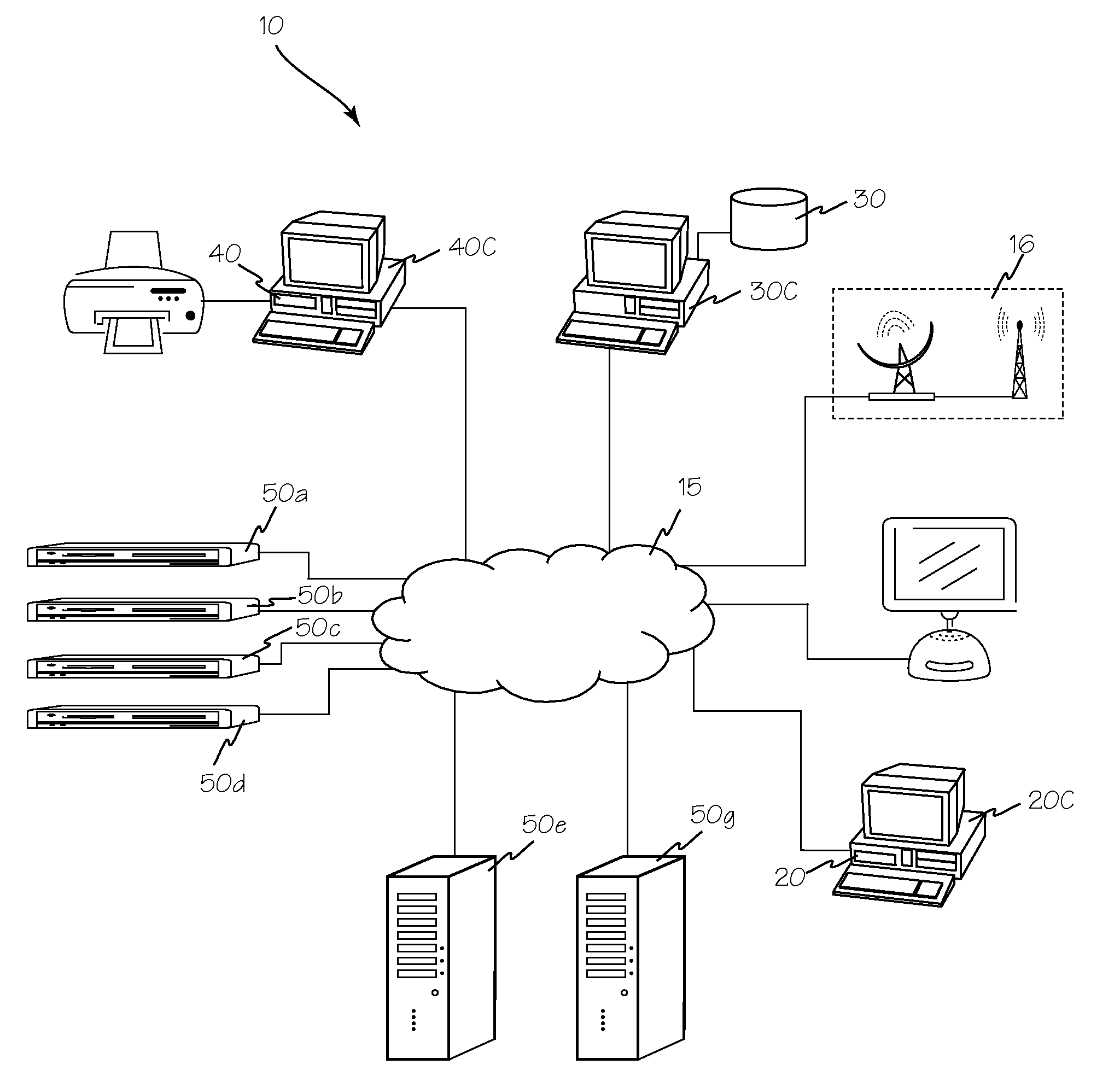Method and Apparatus for Monitoring Network Servers
a network server and monitoring method technology, applied in the field of automatic monitoring of database servers, can solve the problems of inability to monitor dbms servers that power these applications, inability to fully automate, and inherently difficult dbms monitoring, and achieve the effect of reducing the number of manual monitoring tasks
- Summary
- Abstract
- Description
- Claims
- Application Information
AI Technical Summary
Benefits of technology
Problems solved by technology
Method used
Image
Examples
Embodiment Construction
[0056]The present disclosure of networked server monitoring techniques is presented using SQL database servers as examples only. The disclosed methods and apparatus may be applied to any suitable server or collection of servers or combination of servers and other networked hardware and may be implemented with any programming or command language, any server connection protocol and or relational data store, or any other suitable hardware and software.
[0057]FIG. 1 is a high level block diagram of server monitoring system 10 which includes one or more monitoring engines such as monitoring engine 20 running on a computer such as first computer 20C, a system database 30 running on a computer such as second computer 30C, and a user interface 40 running on a computer such as third computer 40C to remotely monitor one or more servers such as servers 50a, 50b and 50c across network 15 and provide alerts and status via either third computer 40C or remote notification system 16.
[0058]Referring ...
PUM
 Login to View More
Login to View More Abstract
Description
Claims
Application Information
 Login to View More
Login to View More - R&D
- Intellectual Property
- Life Sciences
- Materials
- Tech Scout
- Unparalleled Data Quality
- Higher Quality Content
- 60% Fewer Hallucinations
Browse by: Latest US Patents, China's latest patents, Technical Efficacy Thesaurus, Application Domain, Technology Topic, Popular Technical Reports.
© 2025 PatSnap. All rights reserved.Legal|Privacy policy|Modern Slavery Act Transparency Statement|Sitemap|About US| Contact US: help@patsnap.com



